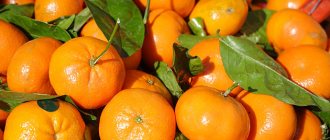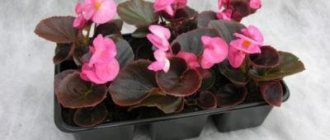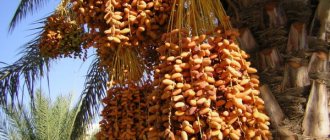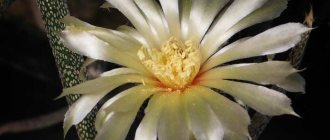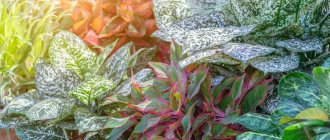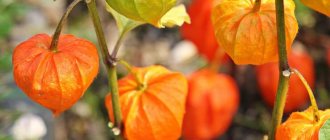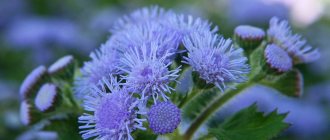Author: Elena N. https://floristics.info/ru/index.php?option=com_contact&view=contact&id=19 Category: Fruit and berry plants Published: June 23, 2018Last edits: April 15, 2021
- Landing in the ground
- Japanese medlar (Eriobotrya japonica)
- Beneficial features
Medlar, or cup tree, or ezgil (lat. Mespilus) is a genus of deciduous plants of the Rosaceae family. According to The Plant List, there are only three species in the genus. The word “loquat” was borrowed from the Turkish language, into which it came from Greek. German medlar, or common medlar, is grown as a cultivated plant; it does not come from Germany, as one might assume, but from South-West Asia and South-Eastern Europe. The medlar was brought to Germany by the Romans. Today, it is found in the wild in Azerbaijan, South Ossetia, Georgia, Armenia, the North Caucasus, on the southern coast of Crimea and even in the central regions of Ukraine. This plant has been grown for more than 3000 years. It was introduced into culture by the ancient Greeks; in the ancient Roman era and the Middle Ages, medlar was already the most important fruit plant. However, then interest in it gradually faded away; it was replaced by other crops, including those imported to Europe from the New World. Nowadays, medlar can be found rarely.
What is medlar
An evergreen plant in the form of a tree or shrub from the Rosaceae family, a fairly close relative of the apple tree (subfamily Appleaceae). The homeland of medlar is considered to be Southeast Asia - India, China, Japan. In these countries it grows on mountain slopes in the form of dense thickets.
Cup tree - a tree typical of tropical latitudes
It also grows well on the Black Sea coast - in the subtropical regions of the Caucasus, Azerbaijan, Crimea, as well as in the USA, Italy, Australia, and Israel. In each locality and culture, the plant acquired its own name. So, medlar is also called ezgil, cup or chishkovo tree, shesek, eriobothria or Japanese winter flower.
Interesting. In China, the plant was called “pipa” due to its similarity with the 4-stringed lute-type musical instrument of the same name, and in the Caucasus and Crimea it is called shishkovnik.
Japanese medlar or loquat, which is an ornamental low fruit-bearing tree, is usually grown as a house plant. This unpretentious house plant is often found in offices, schools, and social facilities.
Rules of use
You need to know how to eat the fruit to fully experience the excellent taste. They eat it fresh, prepare salads, stew it with sugar, use it in desserts using gelatin, and add it to sauces.
The skin comes off well, but is often not peeled off. It is thin, chews well, and contains many nutrients. Recommendation: Doctors advise adults to eat no more than 4 pieces per day.
What does the plant and its fruits look like?
Under natural conditions, the cheeshkova tree can reach 8 meters, but when propagated it is rarely possible to grow a specimen higher than 150–200 cm. The crown is rounded, turning into a tent-shaped crown with age. The twisted trunk is covered with brown, rough bark; in the natural environment there are thorns; ornamental plants do not have this rudiment.
Japanese lokva resembles apricot in appearance and taste.
The leaves are oval or oblong, large (20 cm long and 7–8 cm wide), leathery, rich green in color. They have a short stalk or are sessile. The foliage is glossy on top and velvety on the back. The shoots are fluffy.
The flowers of both sexes can be white or creamy-yellow in color and have a pronounced aroma, vaguely reminiscent of the smell of almonds. The flower size is small - up to 2 cm in diameter. In one panicle-shaped inflorescence, similar to a bird cherry, there are up to 80 flowers. Eriobothrya blooms from November to December, and the fruiting period occurs in May–June.
Interesting. Cup tree flowers are used in perfumery to create citrus scents. Some of the most popular perfumes with notes of loquat include Missoni Colori Arancio, Lili Bermuda Calypso and Elizabeth Arden Sunflowers Sunlight Kiss.
The ovary is formed by self-pollination and cross-pollination. The tree produces its main harvest between the ages of 6–7 and 40 years.
The fruits are round or pear-shaped, the size of a five-kopeck coin, bright orange, depending on the variety, they look like apples or apricots, with several (usually three) large seeds inside. The pulp resembles an apricot in appearance, slightly sour, with a pear and cherry flavor. Inside the fruit there are from 1 to 8 large brownish seeds.
Selection rules
You can eat ripe berries with pleasure; unripe ones will be sour. The fruits ripen on the branches; it is not advisable to collect them in advance.
You need to understand how the best fruits are selected based on ripeness. They should be a little soft and not have major mechanical damage. The peel should be intact, without rot.
You should not buy unripe ones, they are sour, they can be used in various dishes. You can recognize immaturity by a greenish tint and excess hardness.
The overripe ones are too soft, they are already turning sour inside, and you can smell the fermentation.
Types of garden medlar
Not all types of eriobothrya are popular among breeders
There are about 30 species of Eriobothria in the world, but the three most popular among indoor plant breeders are:
- Japanese
- Germanic
- grayish (Sterna)
Japanese loqua
Japanese medlar or loquat (Chinese, Maltese plum) - grows naturally in China and Japan. It is quite problematic to grow in open ground conditions due to the high demands of the plant on temperature conditions and the frequency of watering. Withstands temperatures down to -20 degrees, then the above-ground part dies.
Japanese loquat does not take root well in open ground, but grows and bears fruit well in moderately hot climates.
Japanese loquat does not take root well in open ground, but grows and bears fruit well in moderately hot climates.
Every year, up to 30 thousand loquat fruits are harvested in Japan. Syrups and wine have been made from fruits in this country for 1 thousand years.
A characteristic feature of the species is larger, wrinkled leaves. The main flowering occurs from September to March. Fruiting occurs in June and, as a rule, is abundant - up to 8 large orange fruits in a bunch. Loqua fruits taste like a mixture of pear, cherry and strawberry with noticeable sourness.
Germanic eriobothrya
German or ordinary ezgil is considered an ornamental plant and grows no higher than 3 meters. The variety got its name because the Greeks brought medlar from Asia to German lands. This is an unpretentious and frost-resistant tree.
The fruits of Germanic Eriobothrya are hard, tough and resemble quince or apples of paradise in appearance.
In May, white single flowers appear, then turn pink and begin to exude a persistent aroma that attracts pollinating insects. The leaves are bright green, changing color to burgundy in the fall. The species bears fruit in November. For comfortable growth of Eriobotria germanica, a warm winter and cool summer are needed.
This type of ezgil is also called Abkhazian or Crimean medlar according to its place of growth - Crimea, the Caucasus, the Balkan Peninsula, Iran, and the countries of Asia Minor.
The fruits are hard, brownish, and unlike other varieties, their appearance and taste are more reminiscent of a combination of apple and quince. The taste of ripe fruit is not very pleasant, but after storing in the freezer or refrigerator for 3-4 months, the taste improves noticeably.
Grayish variety of cup tree
Flowers of Eriobothria sterna
Stern's loquat or grayish (discovered in 1990) is a large deciduous shrub, but can also take the form of a small tree.
The flowers are snow-white and appear in late spring. The fruits resemble leathery reddish apples measuring 3 cm.
Storage rules
To enjoy the unforgettable taste, you need to visit the places where it grows during the harvest season (April - June). It is poorly stored and cannot be transported.
Can be kept in the refrigerator for no more than 3 days. Since they don’t store much of it, it’s not profitable to buy in reserve; everything will rot.
Growing seedlings in open ground
German Eriobothrya is suitable for planting in open ground, as it is a more frost-resistant, tenacious and unpretentious species. A significantly grown plant with a height of 30 cm or more should be planted. The location on the site must be chosen carefully - the survival rate of eriobothrya depends on this.
Choosing the right place to plant a tree is the key to a bountiful harvest of eriobothrya
It is better to choose slightly acidic or alkaline soil, where groundwater does not approach the surface closer than 1.5 meters. A bush will do well in a well-lit corner. When planting, you should take into account the comfort zone of 1.5 by 1.5 meters and do not plant other ornamental and fruit-bearing plants nearby.
Choosing the right place to plant a tree is the key to a bountiful harvest of eriobothrya
The decorative properties of eriobothrya are highly valued in landscape design. Using a tree, you can frame a garden path or zoning an area.
To properly plant winter flowers, you need to follow simple rules:
- Dig a hole 1/3 larger than the volume of the seedling's earthen ball.
- Pour sand drainage into the bottom, then add complex fertilizers and a handful of bone meal.
- Place the seedling in the hole.
- Fill with a mixture of regular soil, peat, humus and sand, and water generously.
- Dig a support for the tree nearby.
- Flatten the soil under the trunk and mulch with compost or humus.
Seeds that have undergone the stratification process can also be planted in open ground, but in this case the first shoots will not appear earlier than in a few years.
Possible problems
Indoor medlar quite easily adapts to unusual growth conditions. But if the grower makes gross mistakes in care or the microclimate in the room is completely unsuitable for the plant, then problems such as:
- Rot appeared on the roots . This is due to very abundant watering and stagnation of liquid in the substrate, especially if the room is cold.
- Curling and wilting of leaf blades . The bush is affected by a bacterial burn. The development of the disease is promoted by cold air, stagnation of moisture in the roots and an excessively large amount of nitrogen in the substrate.
- Slow growth . Associated with poor lighting or lack of nutrients.
- Pests . Scale insects, aphids and sooty fungus can settle on the plant.
Plant propagation
Cuttings are a good way to preserve the varietal properties of a plant
There are several main ways to reproduce eriobothrya:
1 Seed or using a seed. Under normal conditions, seeds germinate within 3 years. By accelerating the stratification process, it is possible to achieve seedling pipping within a few months. A plant grown in this way will be decorative and, most likely, will not bear fruit.
2 Cuttings. To do this, take the top or cut a branch of the plant at an angle of 45 degrees into pieces 12 cm long with 2-3 buds on each. The lower leaves are removed, and the cut site is treated with crushed charcoal to prevent rotting. The cuttings are planted in open ground or a pot and greenhouse conditions are created, maintaining high temperature and humidity. If all conditions are met, the branches will take root in 30–35 days. It is recommended to darken the cuttings, which will promote root formation.
3 Air layering. The method is used to accelerate the fruiting of eriobothrya. A ring of bark is removed from the tree trunk and a plastic bottle with soil is attached to the cut site so that the cut site touches the ground. The soil is regularly watered, and after the cutting takes root in the bottle, it is cut off from the trunk and planted like a regular cutting.
For rooting cuttings and layering, it is best to use a soil mixture of sand and peat in equal proportions, and carry out the procedure itself in August–September.
It will be possible to preserve the properties of a certain variety of cup tree only if cuttings are taken and layering is formed. In case of seed propagation there is no such guarantee. If you need to get cuttings for budding, you can grow a cheeshkovo tree on the rootstock of common quince, pear, hawthorn or rowan.
Medlar in landscape design
Designers plant German medlar, with its spreading and dense crown, for its reddish-brown foliage. Often two or three trees are planted to the north of other plants so that they create a barrier from the cold winter winds, because mature medlar is winter hardy.
- Roses (bush): planting, care, propagation
Medlar is grown as a central point in a small garden: its magnificent crown is decorative even without leaves, and in the spring it opens flat, saucer-like, fragrant pinkish or white flowers. The medlar will bloom for the second time in August-September, and in the fall the leaves of the plant will turn an unusual reddish-brown or red-yellow hue. Fancy fruits also add to the plant's attractiveness. Decorative throughout the season, medlar can be planted in a row along the garden path, creating a park alley of trees with slender trunks and closed crowns.
How to grow exotic from seed
To propagate medlar (it is better to take the Japanese variety) in an apartment, they use seeds extracted from ripe fruits. They need to be planted in the ground immediately, because over time they lose half their ability to germinate. If it is not possible to place the grain in the ground, then it can be stored in a wet rag for 2–3 months before planting at a temperature of 4–5 degrees.
The first shoots of eriobothrya appear 30 days after planting the scarified seed
To increase the chances of seed germination, it is recommended to break the integrity of its shell by rubbing it with sandpaper or a file from different sides. Then the nucleolus is filled with clean water at a temperature of 20–25 degrees for exactly one day. If the seed floats up, it is thrown away - it is hollow inside and will not give life to a new plant. The seed can also be pickled in a solution of potassium permanganate.
Each kernel must be planted in a separate pot with a top diameter of 8 cm - ezgil does not like transplants. For planting, a mixture of high-moor peat with mineral additives and microelements, usual for seedlings, is used. It is very important that the pot has adequate drainage to allow excess moisture to drain away.
The depth of immersion of the seed into pre-moistened soil is small - only 2 cm. Then the container is covered with plastic film or glass to create a greenhouse effect. If condensation appears, the homemade dome is removed and the soil is ventilated to avoid mold.
The crops need to be watered once every two days, and the top layer should be sprayed daily from a spray bottle with pre-softened water at room temperature.
Recipes with loquat
Loquat jelly from pastry chef David Lebovitz from California, USA
To prepare approximately 2 liter jars of jelly you need:
- 1.5 kg of ripe German medlar
- 1 large green sweet and sour apple
- half a lemon + a little for taste
- 2 liters of drinking water
- 600 g sugar
- Cut the whole medlar into 4 pieces without peeling. Cut the apple, also without peeling, into 6-8 pieces. Cut the lemon into 2 parts lengthwise. Place all prepared ingredients in a saucepan with a thick bottom and add water. It should completely cover the contents and the ingredients should float in it.
- Bring the contents of the pan to a boil over medium heat. Reduce heat and simmer at low simmer for 40-45 minutes.
- Line a colander with several layers of gauze. Place a colander in a deep bowl and pour the contents of the pan. Cover the colander with gauze and leave for 6-8 hours. There is no need to crush the sweet mass, otherwise the jelly will be cloudy.
- Pour the liquid into a large saucepan. It should be about 1 liter. Place a small saucer in the freezer.
- Add sugar to the pan and cook over low heat until the mixture becomes jelly-like. The temperature of the jelly will be approximately 104-105 °C. To check the readiness of the jelly, scoop the mixture with a tablespoon. Place a spoon on a plate in the freezer and leave for 2-4 minutes. Take out a spoon and press your finger into the jelly. If it wrinkles, it means it's ready. If not, continue cooking the jelly until it becomes jelly-like.
- When the jelly is ready, you can offset the sweetness with a few drops of lemon juice if you wish. The jelly is ready. Remove from heat and pour into clean jars. This jelly can be stored in the refrigerator for exactly 3-4 months.
Loquat Pie
To prepare a pie for 6 servings you need:
- 100 g whole grain flour
- 100g all-purpose flour (general purpose)
- 100 g softened butter
- 120 ml cold water
- 500 g whole medlar
- 40-50 g honey or 70 g cut into pieces honeycomb with honey
- zest and juice of 1 juicy orange
- 40 ml cream 22% fat
- 1 egg
- ½ tsp. apple pie spices
- salt on the tip of a knife
- Mix flour in a bowl. Add softened butter and mix with flour with a fork until fine crumbs form.
- Add ice water and stir. Form into a ball. If the mixture is dry, add a few more drops of water. Cover the dough with a towel and leave for 15 minutes. at room temperature.
- Roll out the dough into a round layer, 4-5 mm thick. Place in a heat-resistant round mold 2-3 cm smaller than the diameter of the layer. Form the sides. Line the dough with baking paper, pour in beans or peas (a layer of at least 2 cm). Bake in an oven preheated to 180°C for 15-20 minutes. Remove pan from oven and remove weights and paper.
- Peel the medlar, remove the seeds, and chop coarsely. Mix with honey, juice and orange zest. Add cream and egg, beaten until smooth with spices and salt. Stir.
- Place the filling in the prepared dough “basket”. Level and bake for 45-55 minutes. Serve the pie hot or cold.
Caring for a plant indoors
Despite the fact that the plant is considered exotic, caring for it cannot be called very difficult, and the medlar itself is too capricious. It is important to follow the basic rules of agricultural technology, and the plant will delight the owner with a beautiful exterior and, over time, a good harvest.
Priming
Winterflower is unpretentious to soil quality, but will grow better in a neutral environment
The cup tree is unpretentious in choosing soil for growth; both loamy and sandy loam soil is suitable for it. But eriobothria feels best in neutral soil, which you can prepare yourself using available ingredients:
- plant humus mixed with soil
- sand
- leaf soil (compost from fallen leaves)
- sod land
The basis of such soil is turf and leaf soil (the former needs to be taken twice as much as the latter), sand provides a drainage effect, and compost serves as a natural fertilizer.
Lighting
The south-eastern window sill is ideal for placing a pot of eriobothria
The plant is light-loving, so it is better to choose a south or south-east window sill to grow it at home. Under direct rays of the sun, the formation of flower buds of the cheeshkova tree occurs better.
Before the flowering period and during it, flower growers recommend increasing the daylight hours for medlars to 12 hours, illuminating it with a fluorescent lamp. One adult individual will need two additional light sources. Additional illumination can be stopped at the end of January.
Temperature
Indoor winterflower responds well to air baths; in summer it can be taken out to the balcony
The tropical ornamental tree loves a moderately warm climate and therefore is optimally kept at a temperature of 18–20 degrees. During the hot summer period, decorative medlar should be taken out onto the balcony or into the garden. Air baths promote the growth of seedlings, so you can also ventilate the room more often.
As soon as the night temperature drops to 7-8 degrees, the pot needs to be brought back into the house. Although an adult plant can withstand sub-zero temperatures, sudden temperature changes should not be allowed; the tree may die.
Watering
There is no need to water the chinese tree in winter, but the soil should not be allowed to dry out completely.
The watering schedule for an adult plant depends on the season: in winter - twice a week, in summer - more often, depending on the rate of moisture evaporation. It is recommended to cover the soil surface with a layer of moss to prevent rapid drying.
It is best to water with settled, clean water slightly warmer than the room temperature. It is not recommended to spray the plant due to the pubescence of the crown. To remove dust from the foliage, you can wash the tree in the shower once a month.
If ezgil overwinters on the balcony, then watering should be stopped completely until the ambient temperature increases. From time to time, a pot of Japanese winterflower should be placed on a mat with moss, expanded clay or small pebbles.
Top dressing
Regular fertilizers for ornamental plants are suitable for feeding the cone plant.
The cup tree responds well to fertilizing, which is best done in the off-season: in spring or autumn with an infusion of organic fertilizers. One of the acceptable feeding options is an infusion of cow manure in a ratio of 1 to 10 with water. The decorative properties of eriobothrya can be improved by adding a little crushed dried plaster to the soil.
During the flowering period, phosphorus fertilizers should be used, and potassium fertilizing should be postponed during active growth.
Young plants are fertilized once a month, adults – three times during one season. In winter and at rest, Eriobothrya is not fed. Once a week, the top layer of soil is loosened, providing oxygen access to the roots.
Flowering and dormancy
The cup tree blooms in late autumn and winter, hence the name - winter flower
Medlar usually blooms at 3–4 years of age in late autumn or winter , when other ornamental and fruit plants have already bloomed and bear fruit. During the cold season, the plant does not need to be watered or fertilized; dormancy for winter flowers during this period is the basis for future abundant flowering and harvest.
Fruiting
Medlar fruits usually have 2-3 seeds
The chishkova tree produces its first fruits already at 4–5 years of age, with the peak occurring at 10–15 years. If the first fruiting is too abundant, it is better to remove some of the fruits, then the fruits will be larger and the load on the tree will be reduced.
The Abkhaz writer and poet Fazil Iskander, in the story “House in the Lane,” described the period of fruiting of the cup tree as follows: “At the beginning of summer, medlar lanterns began to light up with yellow lights, then they turned orange and did not change for a long time after that...”
Trimming
The cup tree only needs sanitary pruning
The cup tree does not require mandatory pruning, but if such a procedure is carried out, the yield of the exotic tree will increase. Cut branches are used for cuttings.
The plant perceives all manipulations with the crown painlessly, which is successfully used in landscape design. At home, the traditional spherical shape of the deciduous part looks best.
In the first years of the plant's life, experts advise cutting off half the length of the branches of the seedlings.
The branches are pruned immediately after the end of fruiting so that the plant has time to lay buds for a new harvest. Sanitary removal of dry and damaged sprouts occurs regardless of the season and period of medlar development.
Transfer
Young plants need to be replanted once a year
Ezgil tolerates replanting quite hard and stops bearing fruit during this period, however, for young plants this procedure must be carried out annually. For adult plants, the growing medium and pot should be changed less often - once every 3 years, but the top layer of soil should be updated regularly.
When replanting, we must not forget about creating a high-quality drainage layer from small stones: expanded clay or gravel; the use of sand is allowed.
Transplantation is carried out by transshipment, so as not to damage the delicate roots, into a container slightly larger than the previous one. The Japanese winterflower will best tolerate the “relocation” after the end of the fruiting period.
Crown formation
To form a shrub from a plant, you need to pinch off the shoot after the third bud
The owner of the ezgil needs to decide on the shape of the crown at the stage of formation of 3 leaves. If the preferred option is a bush, then the sprout needs to be pinched. When choosing the shape of the tree, at the age of 7 months, the lateral shoots begin to be removed.
At home, plants rarely grow higher than 1.5-2 m, so in any case there should be no problems with care and harvesting.
Diseases and pests
Drying of leaves is one of the common problems when growing winter flowers.
Under natural conditions, medlar can only be affected by plant diseases such as rhizoctonia and dry top. The cultivated cup tree is resistant to various kinds of diseases and pests, but for prevention, the plant in the open ground can be treated with broad-spectrum preparations twice a year.
The most effective insecticides: Fitoverm (20 ml per 10 l of water), Insegar (5 g per 10 l of water) and Lepidotsid (30 g per 10 l of water). Natural remedies can be treated with infusions of tansy, wormwood and nettle.
The most common problems that gardeners encounter when breeding eriobothrya, and methods for eliminating them, are presented in the table.
At home, the main pest for the plant is earthworms, which make passages in the ground and form voids. To get rid of them, you need to place the container with eriobothria in water for several minutes.
The scale insect, which appears when the plant is poorly cared for, can provoke the spread of a fungal infection. You need to fight it by wiping the leaves of the bush with tobacco infusion and treating it with insecticides.
If eriobothrya is attacked by aphids or spider mites, then the leaves and stems need to be wiped with special solutions every 2-3 days until the symptoms disappear:
- Dissolve 30 g of crushed laundry soap in 1 liter of water, infuse and filter.
- Add 5 drops of rosemary essential oil to 1 liter of clean, settled water.
- A pharmaceutical alcohol tincture of calendula is added to the water for wiping the foliage.
Growing from cuttings
Both species reproduce well from cuttings that have good viability. This cultivation option is carried out as follows:
- take several branches of last year's growth, 20 cm long, with two developed nodes;
- cut leaves in half to reduce evaporation;
- powder the cuttings with ash;
- Plant one at a time in pots with a thick layer of drainage. Take soil from peat and sand in equal proportions, spray and water as the soil dries.
You can make a dome for the plant from a transparent material for more comfortable conditions and add “kornevin” to the water for irrigation for faster rooting. With proper care, the cuttings should take root within a month. The growth will not be noticeable for a long period of time, because the cutting will be at the stage of forming the root system. After a year, the plant can begin to grow strongly, since the root system is already fully strengthened. With proper care, a tree will gradually grow, which will delight you with beautiful flowers and juicy fruits.
Popular varieties
Different varieties of chinese trees have different organoleptic properties
The varietal diversity of medlar is very rich. Depending on the variety, Japanese or German, the fruits can be divided into two types: large pear-shaped ones with soft juicy pulp and small hard, apple-like fruits with noticeable sourness.
The most popular varieties of cup tree are presented in the table.
Among the varieties loved by gardeners are also: Monreale (Italy), Thales, Tams Pride (Australia), Advance, Uze-fangzhong (China), Early Red (USA).
In Russia, the following varieties are recommended for cultivation: Sochi, Khvamli, Karadagskaya, Goytkhskaya.
Fruits of any variety tolerate transportation well and are stored for a long time, and the fruits of German eriobothria even need to be frozen to improve their taste.
general description
Japanese medlar is a fruiting and decorative evergreen tree or shrub up to 8 m high. The inflorescences and shoots are covered with thick felt fluff, which is why they appear reddish. Its leaves are oval, dense, entire, the upper part is smooth, the lower part is pubescent, reaching 25 cm in length and 8 cm in width.
Loquat grows like a small tree
White or slightly yellowish fragrant flowers with five petals are collected in inflorescences on the tips of the shoots, reaching no more than 12 cm in length and containing 60-90 buds. Flowering usually occurs in November-January; the ovaries cannot tolerate even a short-term drop in temperature below 0 degrees and fall off.
The fruits of the Japanese medlar are tasty, juicy, sweet, pear-shaped. They contain a lot of potassium and vitamin A.
Chemical composition of ezgil fruits
Winterflower fruits are a storehouse of nutrients
Medlar fruits are consumed both raw and processed. 100 g of medlar fruit contains 47 kcal. They are low in protein (0.43 g) and fat (0.2 g), but high in carbohydrates (10 g).
These aromatic fruits contain 10% sugars and 7% malic acid, citric acid, vitamins A, C, almost all B nutrients, folic acid, iron, manganese, potassium, sodium, selenium, zinc, calcium, aromatic and tannin substances, phytoncides.
What to cook from medlar
German medlar - already fermented and ripe - with soft pulp is well suited for preparing various dishes. It can be mixed with cottage cheese or natural yogurt and served with cheese. Since murshmula is rich in pectin, it can be used to make jelly or jam. Another popular cooking method is “loquat cheese.” Mix the medlar pulp with cheese, butter, add a little sugar and a heated but not boiled egg to bind the mass. If you use raw eggs in your food, raw eggs will work even better. And don’t forget to add a little salt to this “cheese” and shape the mass like a wheel of real cheese.
The benefits and harms of eating an exotic fruit
Chishkova tree seeds contain toxic substances in their raw form.
In addition to their pleasant taste, winterflower fruits have healing properties. In folk medicine, fruits are used to treat:
- diseases of the gastrointestinal tract
- dysfunctions in the endocrine system
- urolithiasis
- asthma
- bronchitis
- renal colic and kidney disease
- diabetes mellitus
A decoction of the fruit has an antitumor, antioxidant, hemostatic and anti-cold effect on the human body, and removes mucus from internal organs and cavities. Loquat is also used as a fixative for indigestion, to strengthen the heart muscle and blood vessels.
Japanese winterflower flowers are used to treat anxiety, depression and even alcohol addiction. The effectiveness of using loquat leaves to treat candidiasis and suppress the human immunodeficiency virus has not been fully confirmed.
The use of medlar is contraindicated for people diagnosed with:
- pancreatitis
- gastritis
- stomach ulcer
- duodenal ulcer
- individual intolerance to the product
Caution should be exercised when giving the fruit to small children, as well as to pregnant and lactating women. Loquat seeds and leaves contain cyanide glycosides in small quantities, during the decomposition of which the poison cyanide is synthesized. This gives Eriobothrya seeds a bitter taste. Symptoms of poisoning with alkaloids from loqua seeds: shortness of breath, vomiting, dizziness.
The strong aroma of Japanese winterflower flowers can provoke headaches, so people prone to migraines should avoid growing the evergreen shrub.
Contraindications for medlar: harm
The ripe fruit, especially the Japanese loquat, is safe and beneficial for most people.
An obstacle may be individual intolerance to fruits. In this case, compatibility is checked in the standard way: they eat one or two fruits and if the body does not “revolt,” everything is fine. They do the same when giving fruit to nursing mothers or children.
Children are given medlar no earlier than three years of age and only after consultation with a pediatrician. Half or one fruit is enough for a child.
Contraindications apply to the following health problems:
- chronic ulcers, gastritis, pancreatic diseases;
- cholecystitis;
- increased stomach acidity – high acidity of the fruit will aggravate the problem.
Ripe fruit is sometimes acceptable, but unripe medlars, juices or wine are strictly prohibited.
Processed or dried fruits in the form of compote, jam, preserves, and dried fruits are safe and healthy in any case.
Even a ripe healthy fruit will cause harm to a healthy person if he overeats. An adult needs five to seven fruits daily, a child – one or two. If you fanatically eat medlar, you can provoke an allergy.
Uses of cup tree fruits
Medlar is widely used in cooking in many nations of the world.
In cosmetology, medlar is often used as a component of anti-aging masks, as well as tonics and serums. The minerals and trace elements that make up eriobothria promote the synthesis of natural collagen and elastin in skin cells to increase elasticity and turgor.
In dietetics, the fruits of eriobothrya are used as a low-calorie product to reduce body weight. Their use reduces appetite and reduces cravings for high-calorie and sweet foods. Loquat pulp contains fiber, which can prolong the feeling of fullness.
Loquat, canned in syrup, is one of the most significant exports from Taiwan.
The bark, leaves and unripe fruits of Eriobothrya contain a lot of tannins, which is used in the leather industry for tanning; the wood is often used for decorative and applied arts. Cup tree flowers are a good honey plant.
The fruits of the Japanese medlar variety, as well as other tropical fruits, are used to make preserves, jams, compotes, desserts, and candy fillings. Winterflower seeds are used in many countries as a coffee substitute due to their similar taste.
Eriobothrya is an ornamental evergreen plant with a pleasant aroma and tasty fruits - an excellent choice for growing at home. The advantageous exterior, as well as the agrotechnical characteristics of the shrub, make it one of the desired specimens in the collections of amateur flower growers. Moreover, with moderate effort and compliance with simple conditions, anyone can easily grow a beautiful exotic plant in their apartment from a seed.
Benefit
A rich set of vitamins and microelements determine its beneficial properties. In the places where it grows, it has long been understood that this berry has anti-inflammatory, wound-healing, and hemostatic qualities.
Benefits of the product:
- stimulates the immune system;
- prevent the appearance of early wrinkles;
- relieves lingering cough;
- reduces the likelihood of developing cancer;
- facilitates the course of diabetes mellitus;
- improves the functioning of the liver and pancreas;
- makes breathing easier;
- helps cleanse the lungs and bronchi;
- has a beneficial effect on the functioning of the digestive system;
- helps restore healthy intestinal microflora;
- improves kidney function;
- promotes weight loss;
- enhances bile synthesis;
- normalizes blood cholesterol levels;
- prevents the development of osteoporosis;
- prevents the formation of blood clots in blood vessels;
- stabilizes blood pressure;
- strengthens blood vessels.
The beneficial qualities do not disappear after heat treatment, so jam and canned products are used for medicinal purposes.
For pregnant women, juicy berries are required for the proper intrauterine development of the baby. Nutrients are involved in the formation of bone tissue, nervous system structures, and blood vessels.
Vitamins are well absorbed and help the expectant mother cope with toxicosis and weather sensitivity.
In cosmetology, juice is used to make masks and add to creams. This helps to lighten the epidermis, tighten it, fight inflammation and acne. Such procedures have calming, rejuvenating qualities.
